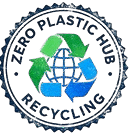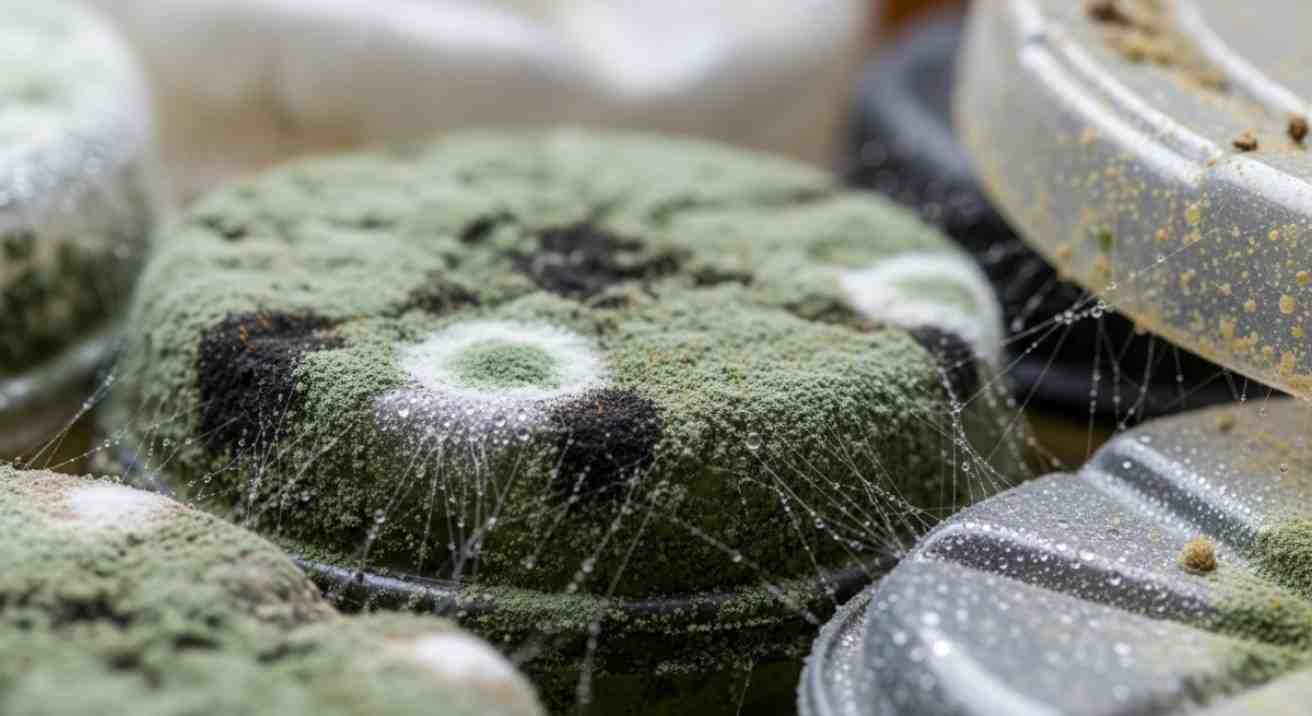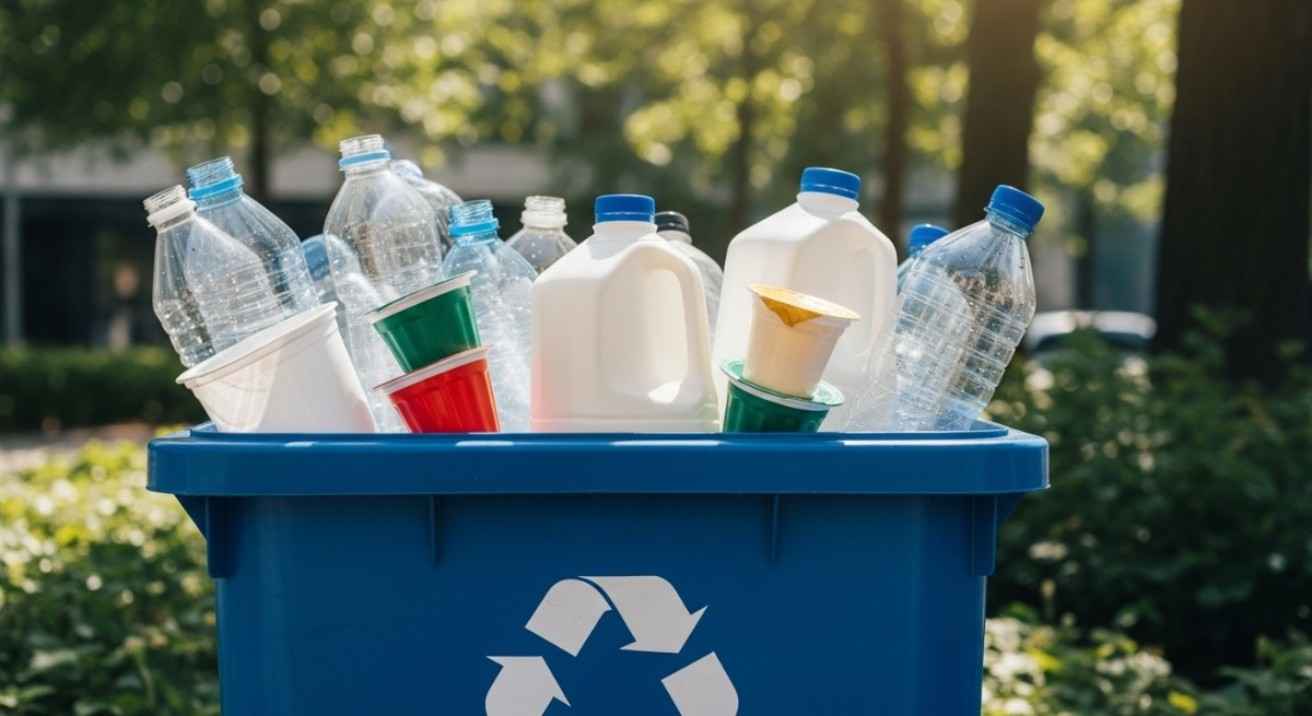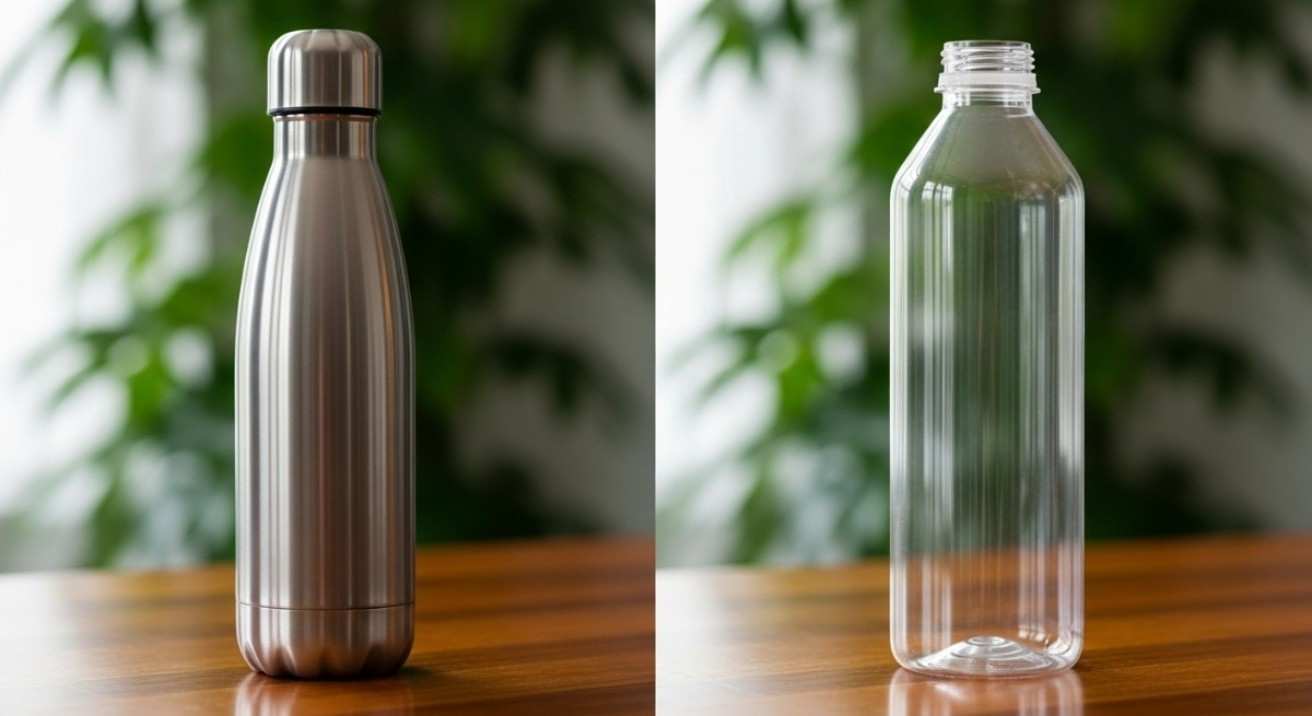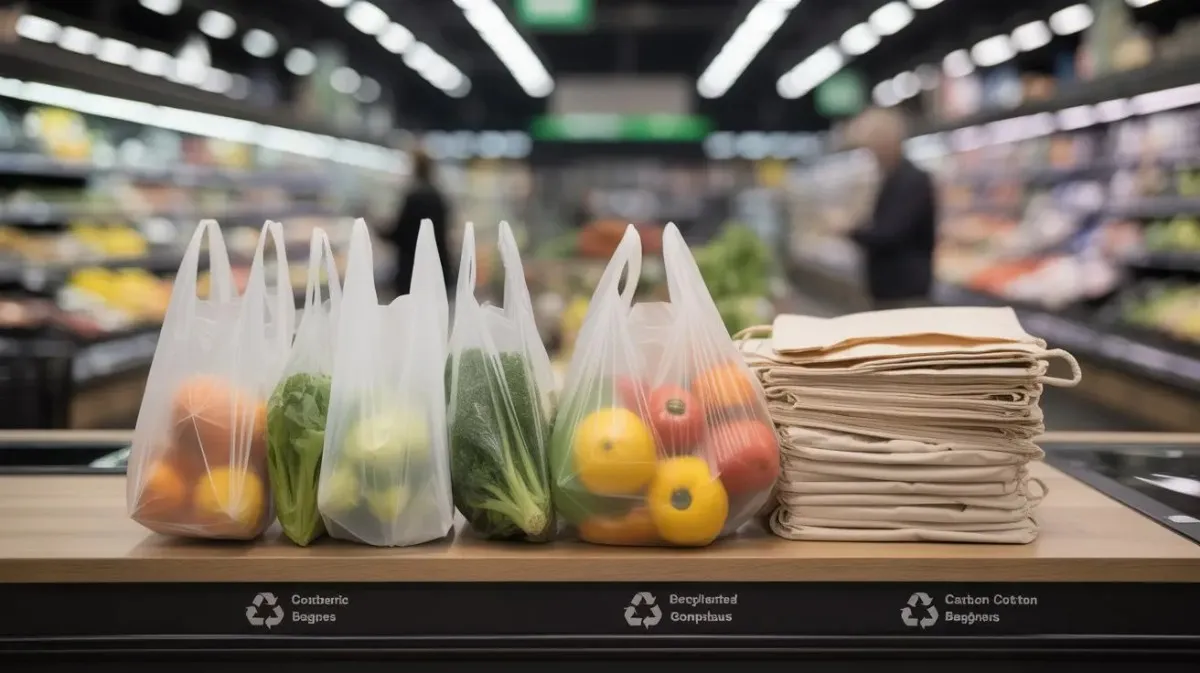Can Mold Grow on Plastic? Yes — mold can grow on plastic, but not on the material itself. Spores need moisture, dirt, or food residue to survive. Plastic bottles, containers, and toys can trap humidity, creating ideal conditions for mold.
Regular cleaning and drying help prevent mold and protect both your plastics and health.
In short, plastic is not fully mold-proof — under the right conditions, it can host mold like wood, paper, or fabric.
Common Causes of Mold on Plastic
| Cause | Why It Leads to Mold |
|---|---|
| Moisture accumulation | Mold spores thrive in damp areas; water trapped on plastic makes it an ideal breeding ground. |
| Food residue | Leftover organic material (like sugar or oil) gives mold nutrients to grow. |
| Lack of ventilation | Poor airflow keeps plastic surfaces damp, increasing mold risk. |
| High humidity | Humid environments (bathrooms, kitchens) accelerate mold growth on plastic. |
| Dust and dirt buildup | Organic particles in dust act as food sources for mold spores. |
| Scratches or porous surfaces | Tiny grooves trap moisture and dirt, creating perfect spots for spores. |
Signs of Mold Growth
You can identify mold on plastic through these clear warning signs:
- Visible spots – Black, green, or white patches on surfaces.
- Musty odor – A strong, damp smell coming from the item.
- Discoloration – Stained or faded areas on the plastic.
- Texture changes – Slimy, fuzzy, or rough buildup that signals mold colonies.
Quick tip: Early detection makes cleaning easier and prevents health risks.
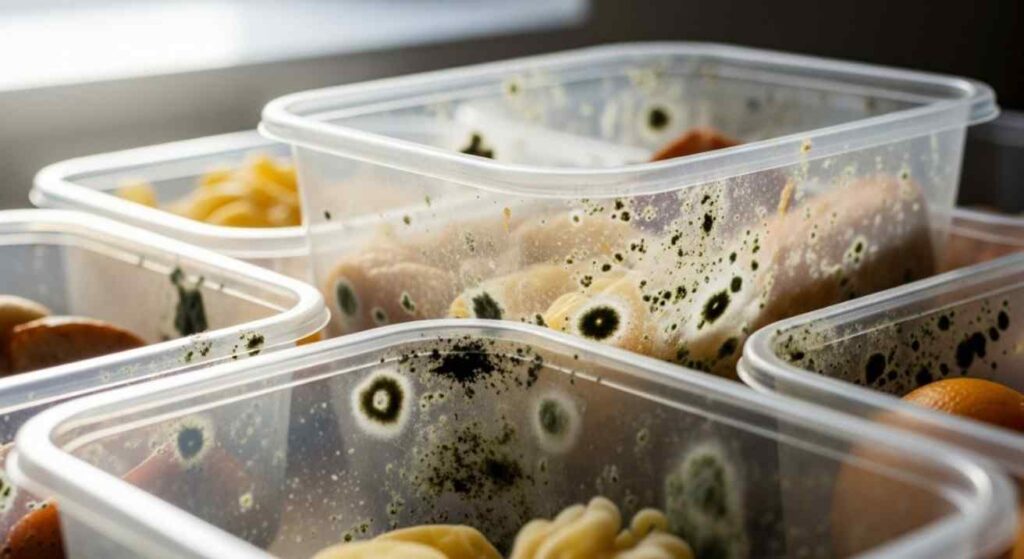
Health Risks of Mold on Plastic
Mold-contaminated plastics can affect health, especially for people with sensitivities:
- Respiratory issues – Spores may cause coughing, wheezing, or throat irritation.
- Allergic reactions – Exposure can lead to skin rashes, itchy eyes, and nasal congestion.
- Asthma triggers – Mold worsens symptoms for those with asthma.
- Toxic mold effects – Some species produce mycotoxins linked to headaches and fatigue.
In short: Mold on plastic is not only unsightly — it may cause allergies, breathing problems, and long-term health risks.
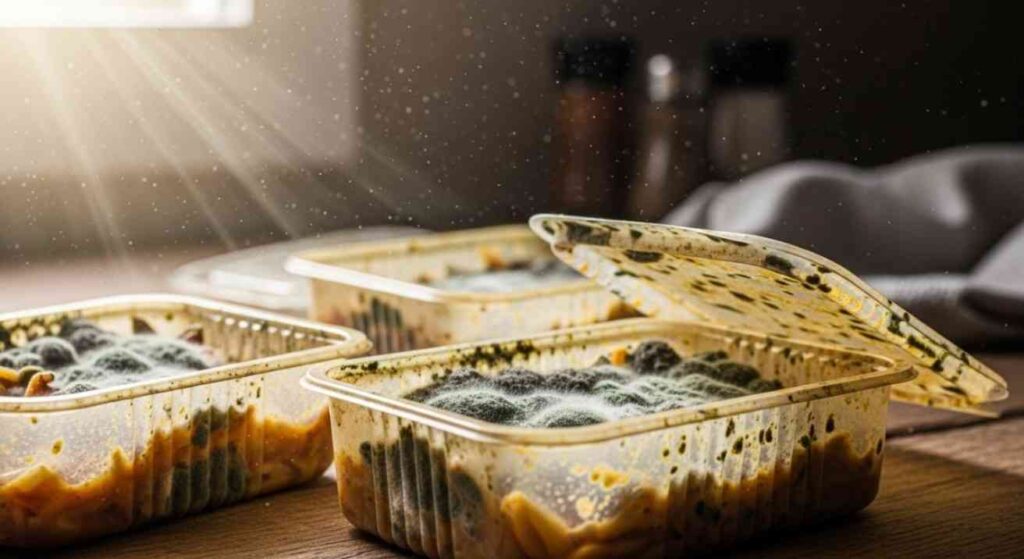
Does Mold Affect All Types of Plastic Equally?
Not all plastics react to mold in the same way. While mold spores can grow on any surface if moisture and dirt are present, some plastics resist better than others:
- Food-grade plastics (HDPE #2, PP #5, LDPE #4) – Non-porous and mold-resistant, but residue or trapped water can still allow growth.
- PET (#1 plastic bottles) – Often vulnerable because sugars and moisture remain inside bottles.
- PVC (#3) and Polystyrene (#6) – More porous and easily scratched, giving mold places to attach.
- Old or damaged plastics – Scratches and grooves trap dirt and moisture, making them mold-prone.
In short: Any type of plastic can support mold growth if conditions are right, but food-grade plastics resist it better, while scratched or porous types are most vulnerable.
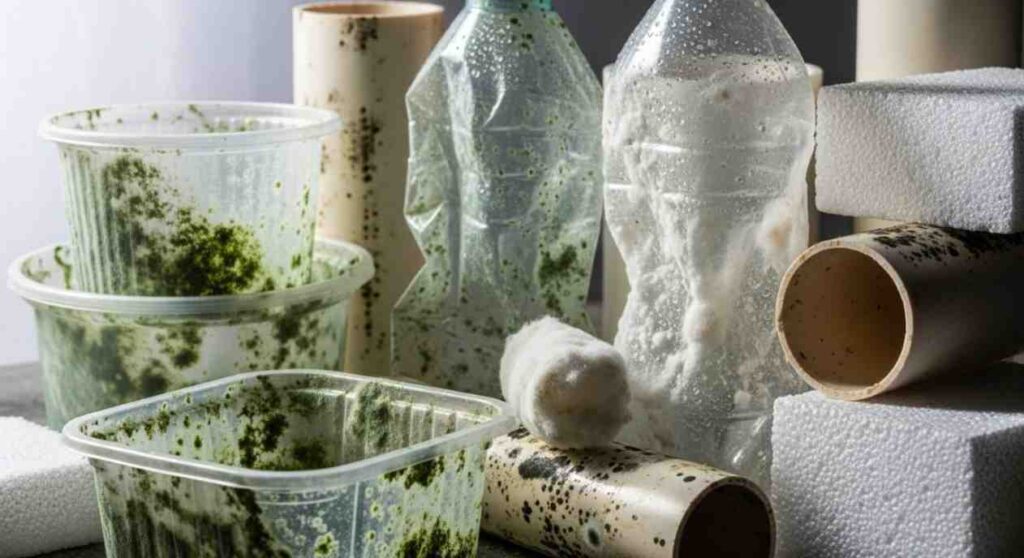
How to Prevent Mold on Plastic
| Prevention Method | How It Helps |
|---|---|
| Keep plastics dry | Mold needs moisture; drying surfaces quickly stops spore growth. |
| Clean regularly | Removes dust, dirt, and food residue that mold feeds on. |
| Store in dry areas | Reduces humidity exposure, especially in kitchens or bathrooms. |
| Improve ventilation | Good airflow prevents dampness and condensation on plastics. |
| Use airtight containers | Keeps food plastics free from moisture and organic buildup. |
| Sunlight exposure | UV light naturally kills mold spores on plastic surfaces. |
| Avoid scratches | Smooth surfaces are harder for spores to attach and grow. |
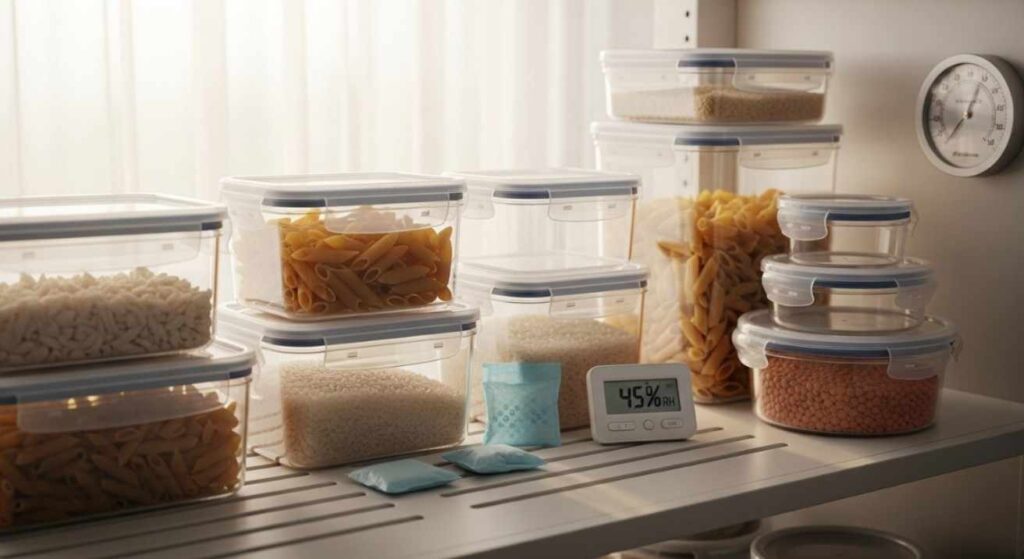
Removal Methods for Mold on Plastic
- Wear protective gloves and mask – Always protect yourself from mold spores before cleaning.
- Wipe surface mold – Use a dry cloth or brush to remove visible mold from the plastic.
- Wash with soap and warm water – This removes dirt, grease, and most mold residue.
- Disinfect with vinegar or baking soda – Natural cleaners kill mold spores effectively without damaging plastic.
- Use diluted bleach solution (for tough mold) – Mix 1 cup bleach in 1 gallon water; soak or scrub plastic carefully.
- Dry thoroughly – Moisture left behind encourages mold to return, so always air-dry or sun-dry.
- Check for scratches – Replace heavily scratched plastics, as mold can hide in grooves.
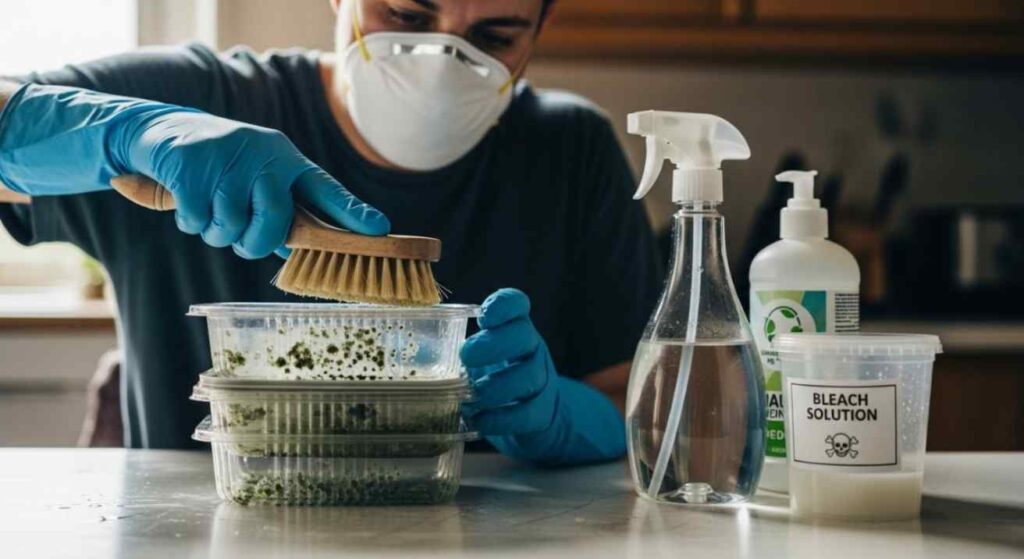
FAQs About Mold on Plastic
1. Can mold grow on plastic?
Yes, mold can grow on plastic when moisture, dirt, or food residue is present. Plastic itself doesn’t feed mold, but trapped organic matter does.
2. How do you remove mold from plastic safely?
Use soap and hot water, vinegar, baking soda, or hydrogen peroxide (3%) to clean. Always dry thoroughly and, if possible, leave in sunlight.
3. Is mold on plastic dangerous?
Yes, mold-contaminated plastics can be harmful. Spores may cause allergies, respiratory problems, and asthma attacks, and toxic molds release mycotoxins.
4. How can I prevent mold on plastic?
Always wash and dry containers, avoid sealing moisture, store in ventilated areas, disinfect regularly, and use sunlight exposure to keep items safe.
5. Should I throw away plastic items with mold?
If mold is only on the surface, cleaning is usually effective. But if the plastic is deeply stained, scratched, or smells musty, replacement is safer.
Conclusion
So, can mold grow on plastic? Yes — but only under the right conditions. By understanding the causes, spotting early signs, protecting health, and following prevention and cleaning methods, you can keep your plastic items mold-free.
Key takeaway: With proper care, plastic containers, bottles, and household items can remain safe, clean, and long-lasting.
